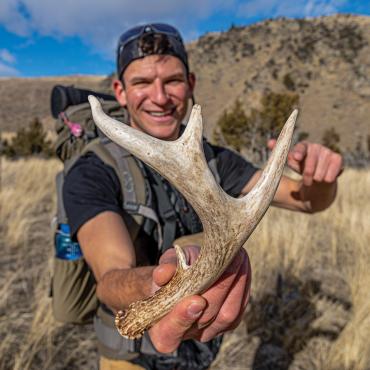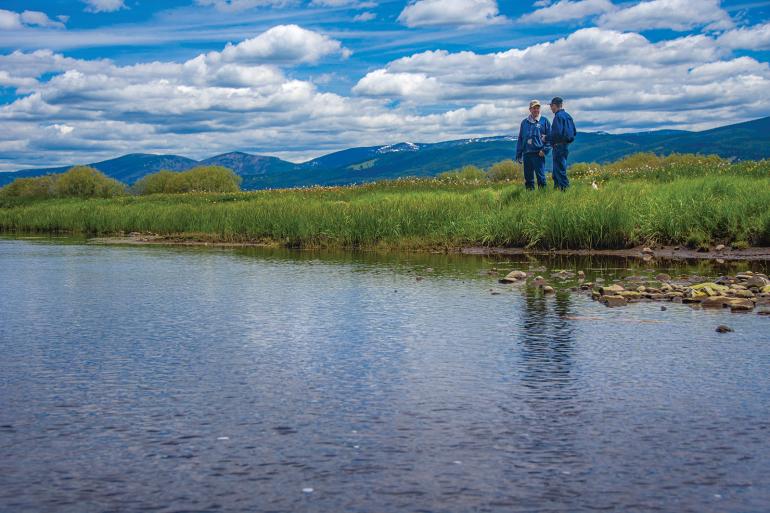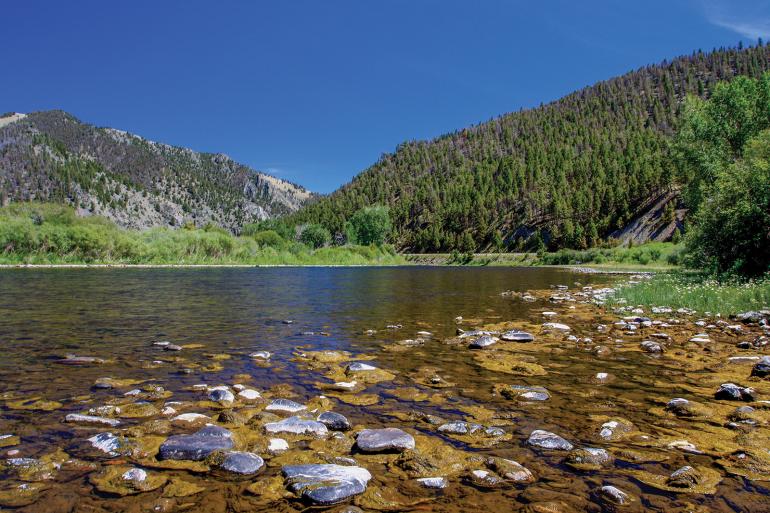Big Problems on the Big Hole
What's behind the low fish counts on one of Montana's most iconic trout streams?
Snaking from its headwaters near Wisdom through a remote canyon and onto the plains, the Big Hole River is the pride and joy for many Montana anglers. Well, used to be, anyway. Recently, trout populations in the river have taken a big hit, and the fishing has steadily tanked. After a tumultuous few years, the prognosis is getting worse: fish are dying, and at an alarming rate.
“We’ve experienced a pretty significant decline, particularly in brown trout over the last five years,” says Jim Olsen, the regional biologist with Montana Fish, Wildlife & Parks (FWP). The long-term average is about 900 browns per mile, but that number has dropped to around 300 in recent years.
The problem appears to be at least two-fold: adult fish are dying, and there’s very little recruitment of juvenile fish. Olsen is blunt in his assessment: nobody knows what’s going on. But Olsen and his colleagues at FWP and MSU have several hypotheses that they hope to test in the coming years.
Leading the pack is streamflow. Juvenile fish rely on woody debris and backwater habitats to survive, and when flows drop on low-water years, those are the first areas to dry out. “Recruitment has historically been variable,” says Olsen. “It depends on water.” Additionally, it can be difficult to gauge recruitment, because it takes several years for fish to become a catchable or evaluative size. But over the last couple years, it’s become apparent that recruitment is on the decline—and low flows are certainly a contributing factor.
The tricky part about water, though, is that it’s one of the factors we—the public—have very little control over. There are several reasons why. First is atmospheric conditions: rain, snowpack, etc. Second is water use by irrigators. The Big Hole is completely allocated in terms of water rights, and any instream flow retention must be voluntary on behalf of landowners. Sure, FWP could pay farmers to let fields go fallow, but that option doesn’t have much support and would prove quite pricey. If water is the main reason behind the declines, it’s going to take some outside-the-box thinking and serious cooperation from ag producers to get the Big Hole back on track.
The Big Hole has guide-boat restrictions in place for certain stretches of river on certain days, but even more might be necessary to avoid sending this precarious situation over the edge.
Fortunately, it doesn’t take long for fish populations to rebound under good conditions. A single brown-trout female can lay 2,000 eggs, and if conditions are right and there are a couple good snowpack years in a row, we could see the river rebound rather quickly, Olsen says.
But low flows aren’t the only culprit. Fishing pressure could be in part to blame. Over the last 15 years, pressure on the Big Hole has jumped from 40,000 to 120,000 angler-days per year. That’s a lot of fishermen with lines in the water, searching for (and catching) the same 300 fish per mile. The Big Hole already has guide-boat restrictions in place for certain stretches of river on certain days, but even more might be necessary to avoid sending this precarious situation over the edge.
When it comes to the future of the river, Olsen is optimistic, but also cautions that there’s only so much FWP can do. “We want to make decisions that have the most effect on the fishery,” he says. That means studying the ecosystem—which is currently happening—and figuring out the root causes so they can be addressed and nipped in the bud, if possible. “We’ve taken steps to protect the fishery as much as we can,” Olsen concludes.
Given the low snowpack this year, it’s unlikely that the downward trend is going to be turned around this summer. If things continue to spiral, it might be worth giving the river a break. Look to other area rivers, or turn your attention to stillwater lakes or high-mountain creeks to satiate the urge to wet a line. Future generations of anglers will thank you when they’re targeting wild trout on the Big Hole decades down the road.













